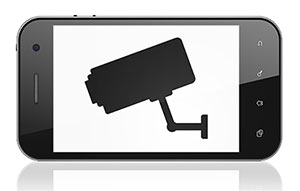
5 Tips for Selecting the Right Enterprise Remote Monitoring Solution
- By Dave Poulin
- Oct 28, 2013
Everyone is looking for ways to be more efficient, more productive and more mobile. At the same time, security remains a top concern.
One of the ways to balance these priorities is with  remote surveillance monitoring solutions. For home security, these systems have become popular options, giving homeowners 24/7 peace of mind by enabling them to use their mobile devices to check alarm systems and view live video feeds virtually anytime, anywhere.
remote surveillance monitoring solutions. For home security, these systems have become popular options, giving homeowners 24/7 peace of mind by enabling them to use their mobile devices to check alarm systems and view live video feeds virtually anytime, anywhere.
That same benefit of mobility and efficiency makes remote monitoring an attractive option for the enterprise. Remote monitoring can be a way to maximize productivity by freeing security personnel from the control room and enabling them to monitor live video feeds conveniently from any location. Recently, new solutions have hit the market, and many enterprise customers are evaluating how these options can fit into their business security strategies.
The term “enterprise” covers a wide variety of businesses, sometimes used to refer to organizations like schools, healthcare providers and public agencies. Each one has its own unique needs and security concerns. For any type of enterprise technology investment, it’s important to first consider the organization’s goals and challenges, and from there, choose a solution that best addresses them. Remote monitoring solutions have several important components, and it’s particularly important to carefully consider how far each one goes to meet your specific needs.
Here are a few of the most important considerations for selecting the right remote monitoring solution:
Video Quality: Quality of video is perhaps the most important feature of any security solution. HD video is now becoming the standard for home-consumer products and enterprise-grade security products alike.
With the growth of H.264 compression, it is much easier to install video surveillance systems that can take advantage of HD video, significantly enhancing security capabilities and allowing enterprises to capture the minutest details essential to an investigation. Improved image quality of HD products has changed the face of the security industry by boosting preventative monitoring and increasing the value of evidence in the courtroom.
Multiple Streams: Whether you’re upgrading an existing legacy system or deploying a new solution, it is important to select cameras that can provide multiple streams, as this capability allows enterprises to choose the video quality and encoding options for each data stream.
For example, customers can leverage full HD for recording in the camera or to a local recorder, while decreasing the overhead of streams assigned to remote monitoring. This provides additional flexibility and ensures bandwidth is utilized as efficiently as possible.
Durability: A remote monitoring solution has two major hardware components – the surveillance video system and the mobile device that is used for remote viewing and control. Often, the costs of installing or upgrading a remote monitoring system can require a generous investment, so it’s important that both of these components are built to handle the environments they work in.
For outdoor surveillance cameras, features such as weather- and vandal-resistance are critical. More advanced outdoor surveillance devices offer rain-resistant coatings that significantly increase their operational utility in wet weather, reducing optical distortion and providing better visibility in rainy conditions.
On the mobile device side, drop resistance is an important feature – drops are the most common cause of failure for a mobile device. For true mobility, the ability to handle water, dust and extreme temperatures is important as is a screen that can be viewed in the daylight. These features will ensure that security personnel are not constrained by mobile device failures and can be as productive out in the field as they would be in a control room.
Mobile Connectivity: High-speed mobile broadband connectivity is the linchpin for any remote monitoring solution. This is, of course, standard on a mobile phone, but for tablets utilized in remote monitoring solutions, look for embedded wireless modules for 4G LTE connectivity. This will ensure that key remote monitoring functionality is available no matter where security personnel’s work takes them, including outside of Wi-Fi zones.
System Security: As cyber threats become an increasingly common problem, it is critically important to maintain security of the monitoring device you’re using to view the video feeds so that a hacker cannot access your device, and use it to view/control your surveillance video.
In healthcare settings, for example, patient privacy is a top concern. To ensure data integrity is maintained across your system, pay special attention to your system’s security capabilities and opt for solutions that offer both hardware- and software-based security features.
Mobility is critical for all types of business, and remote monitoring solutions allow customers to leverage efficiency gains while keeping their facilities safe and secure. These solutions give security personnel the ability to gain the situational awareness necessary to make timely, actionable decisions that put safety first. By keeping these considerations in mind, customers can select the right system to improve both security and efficiency.